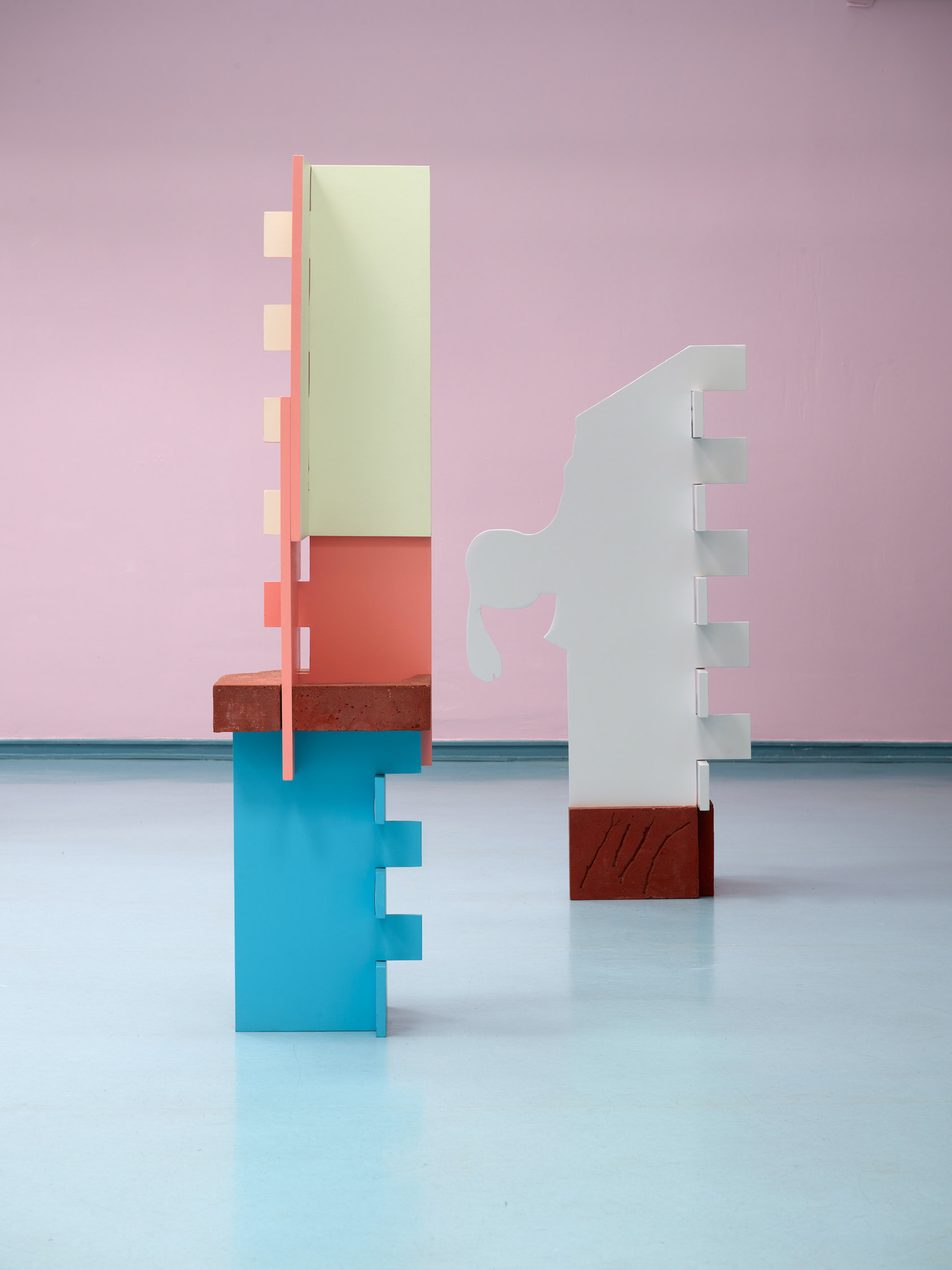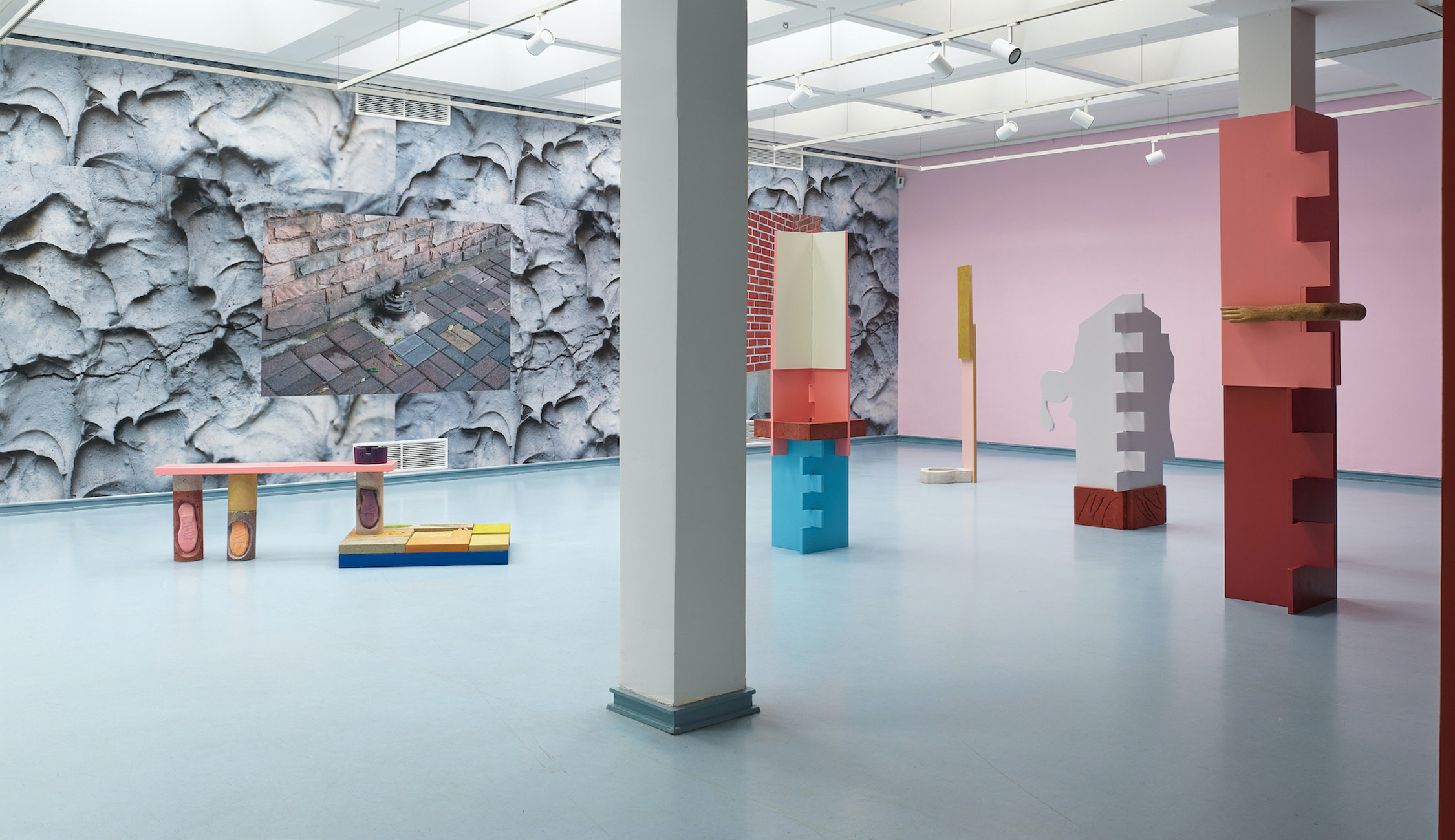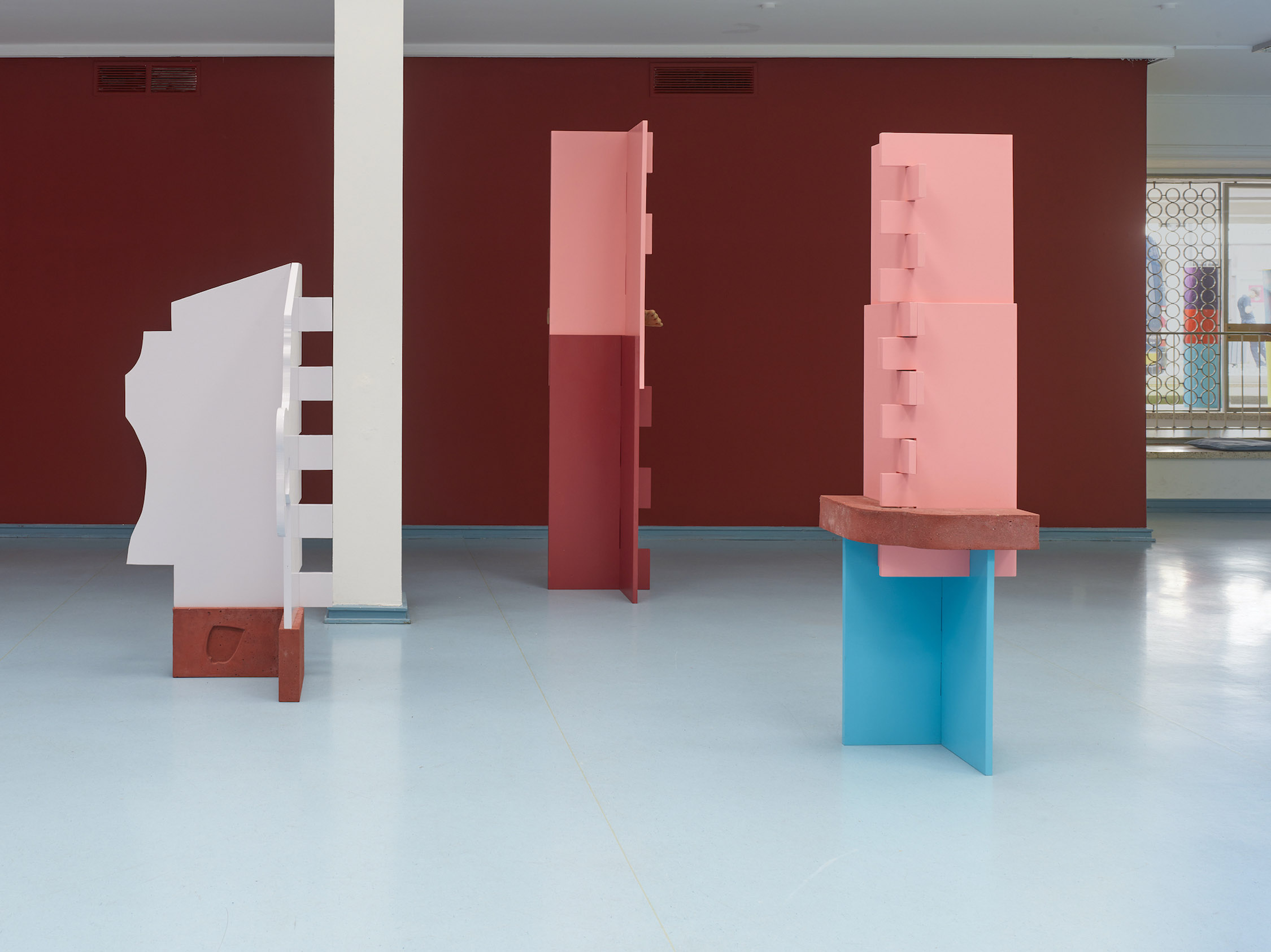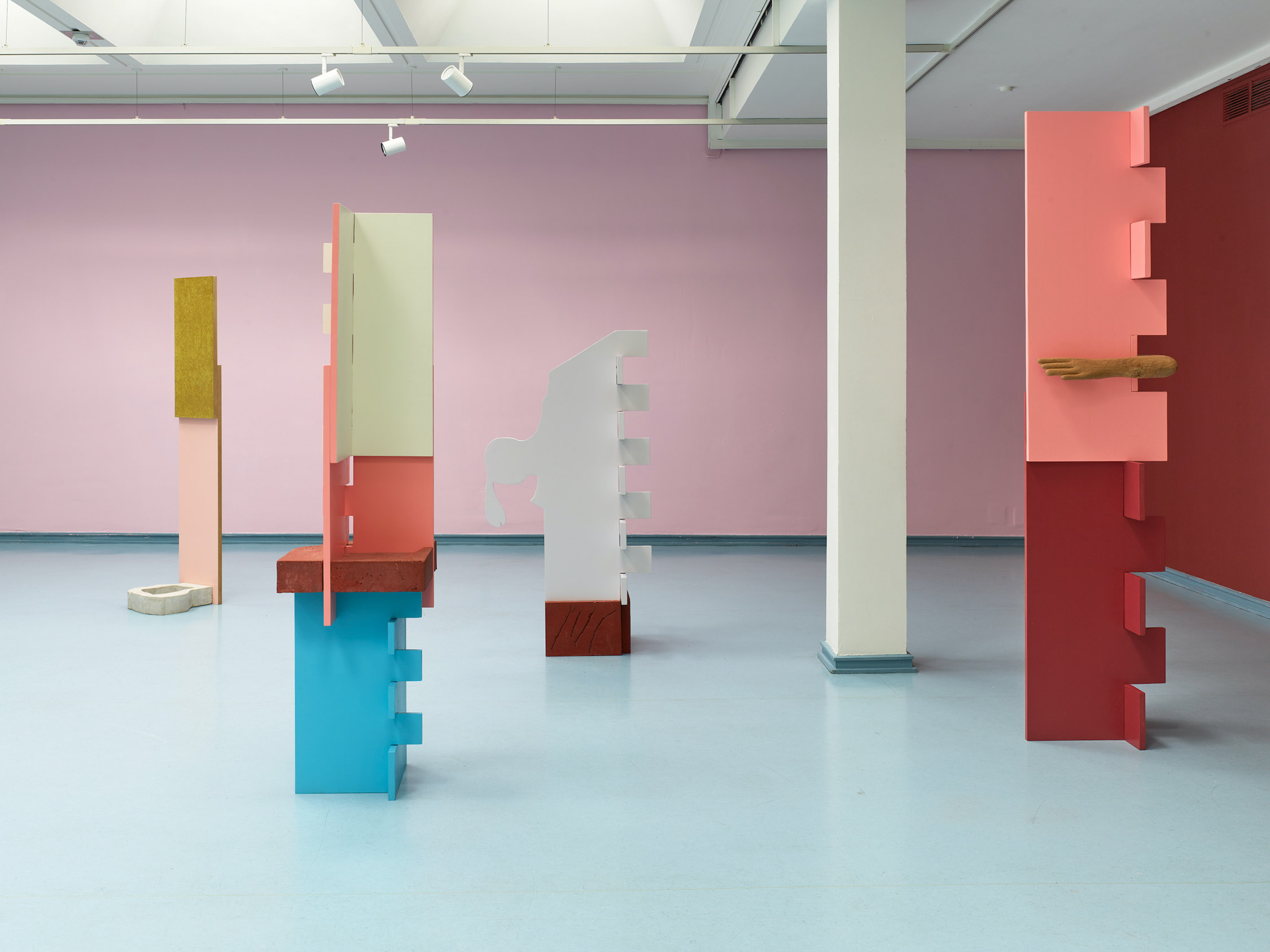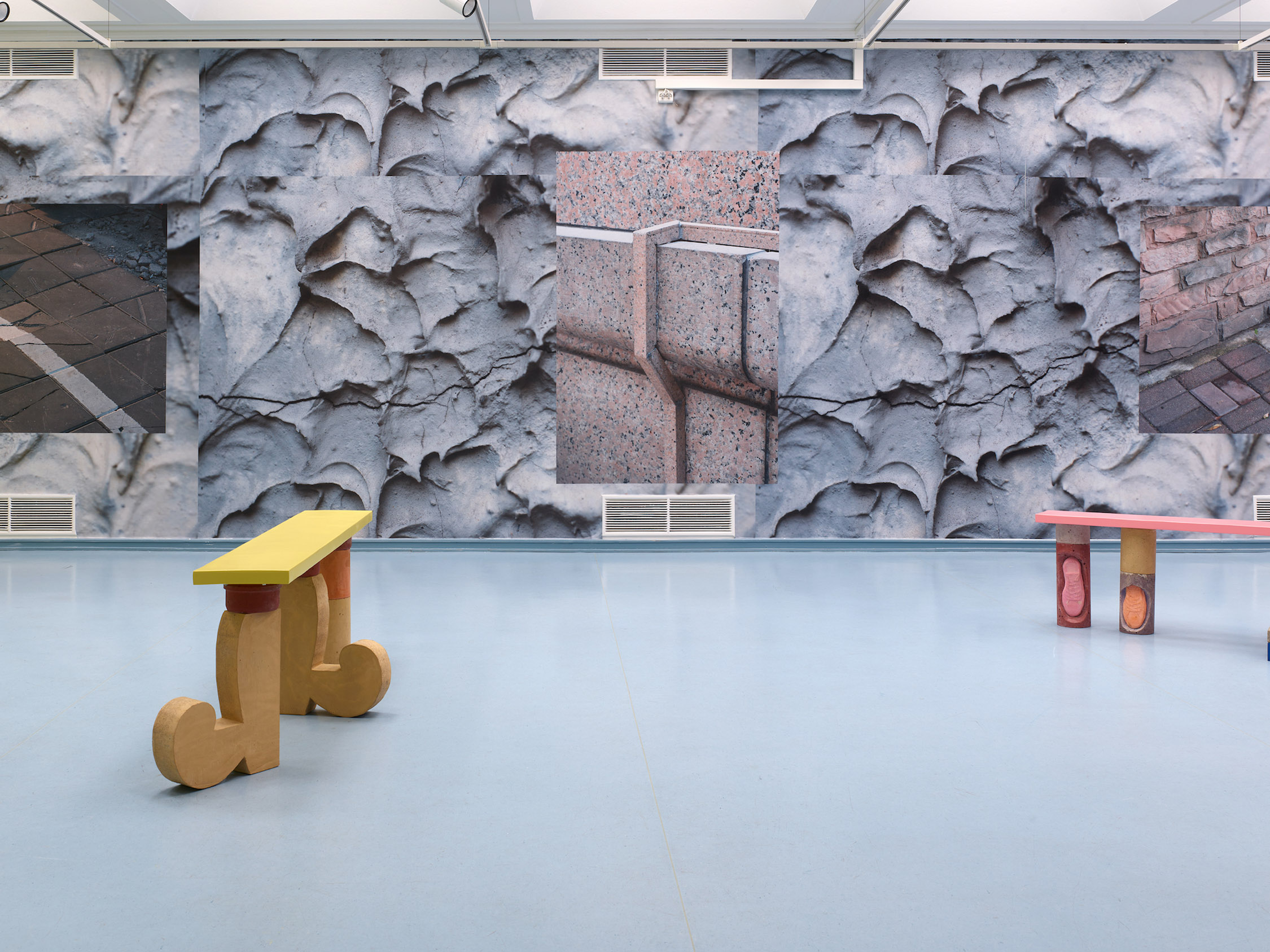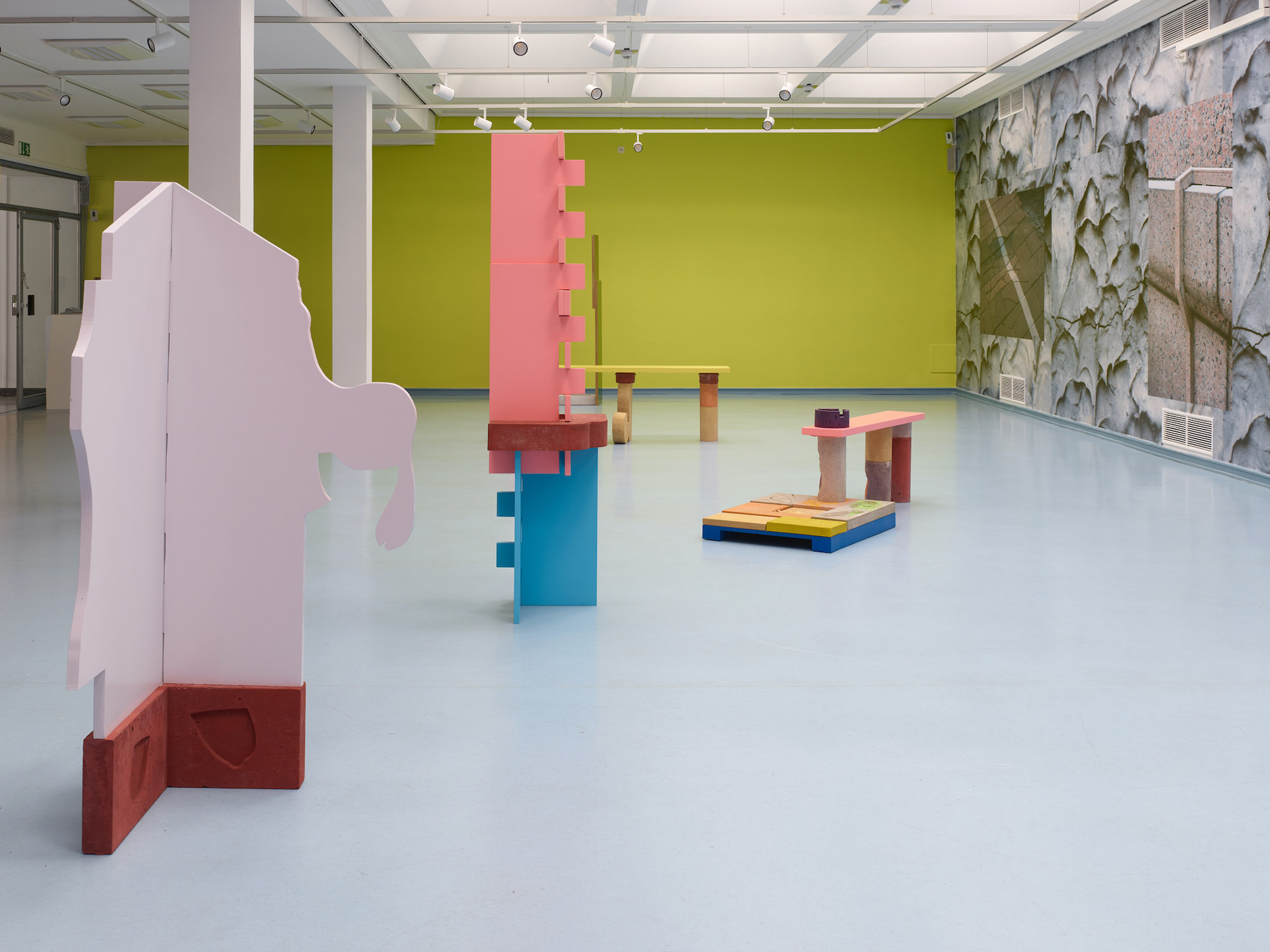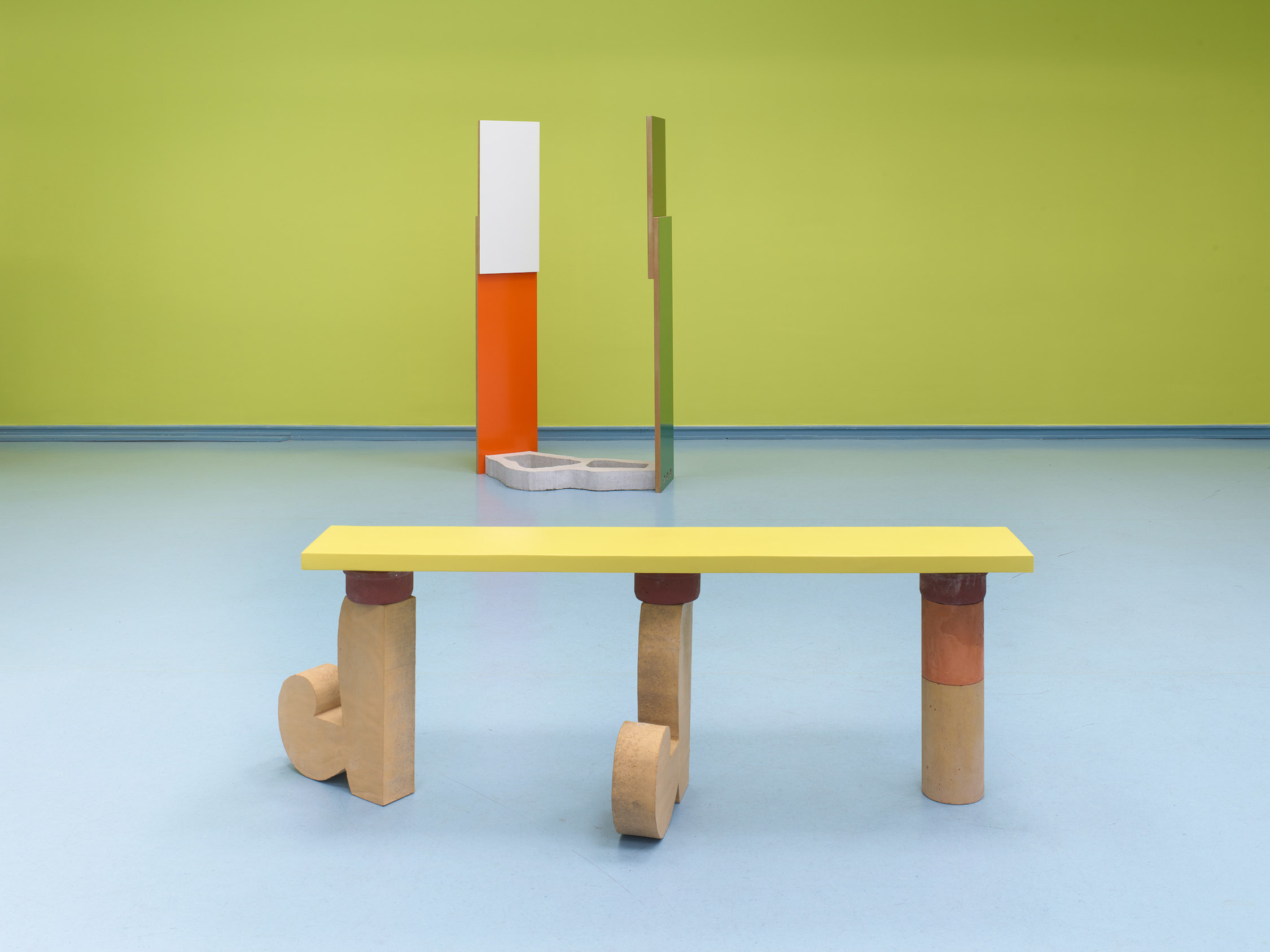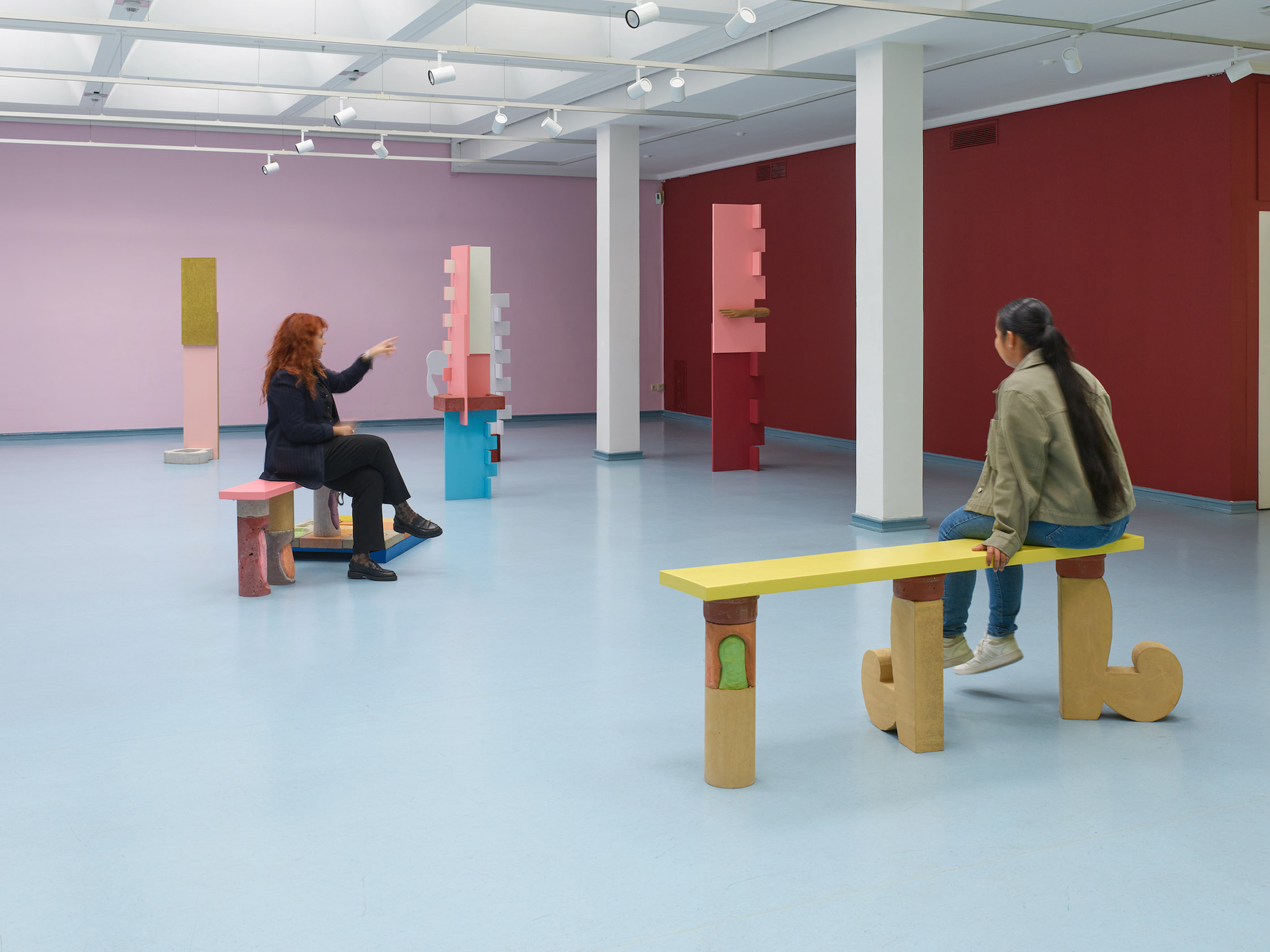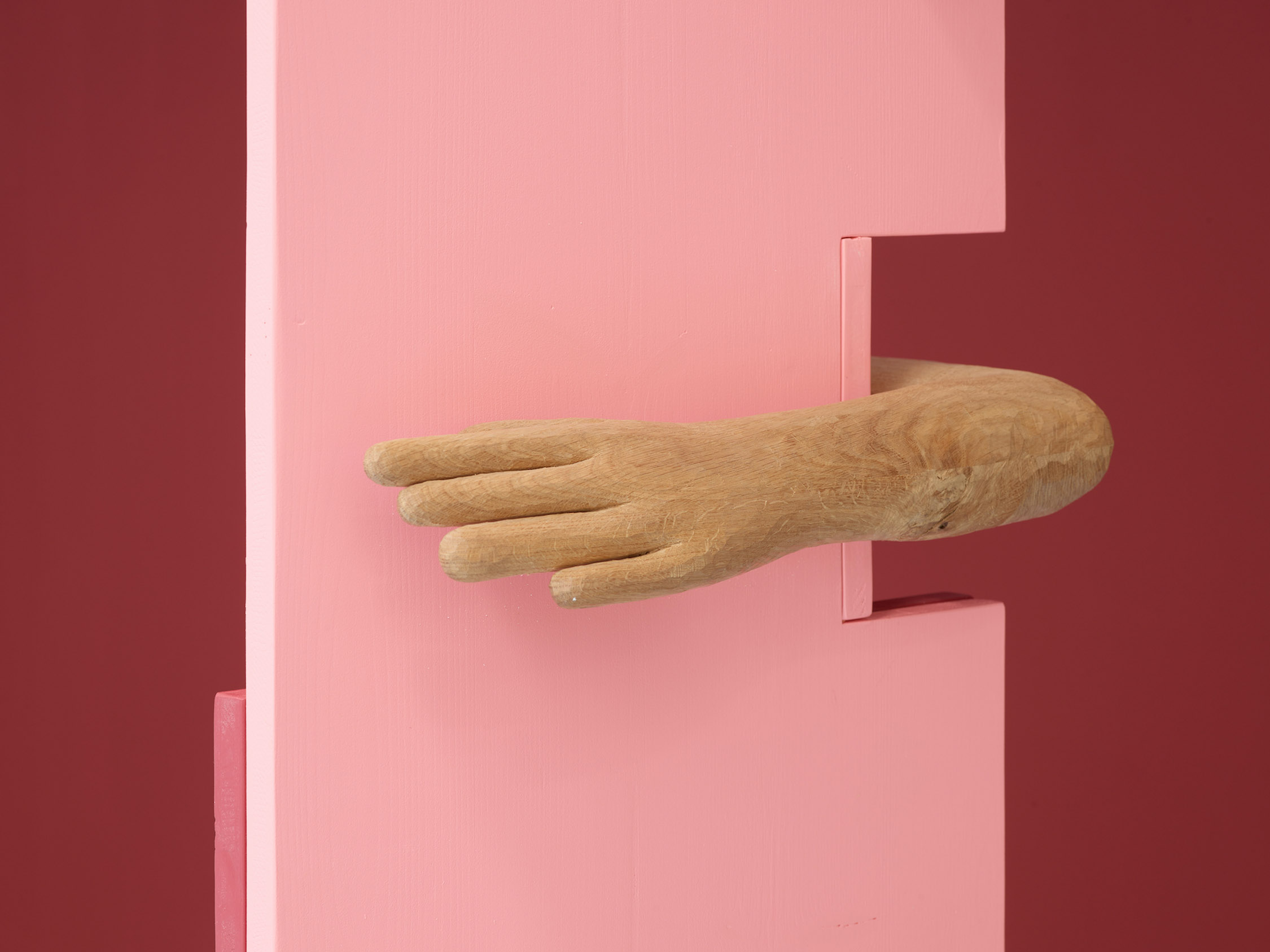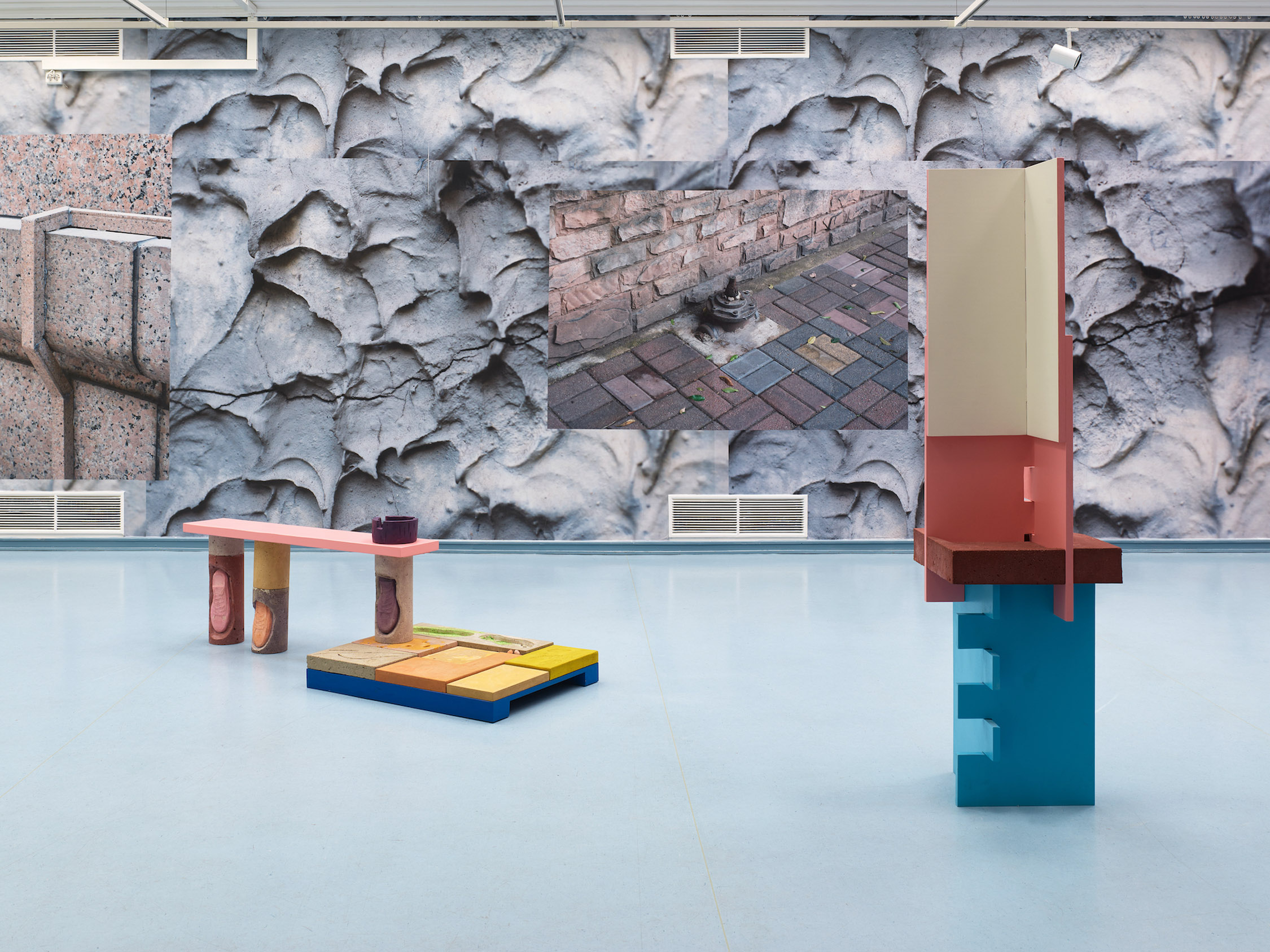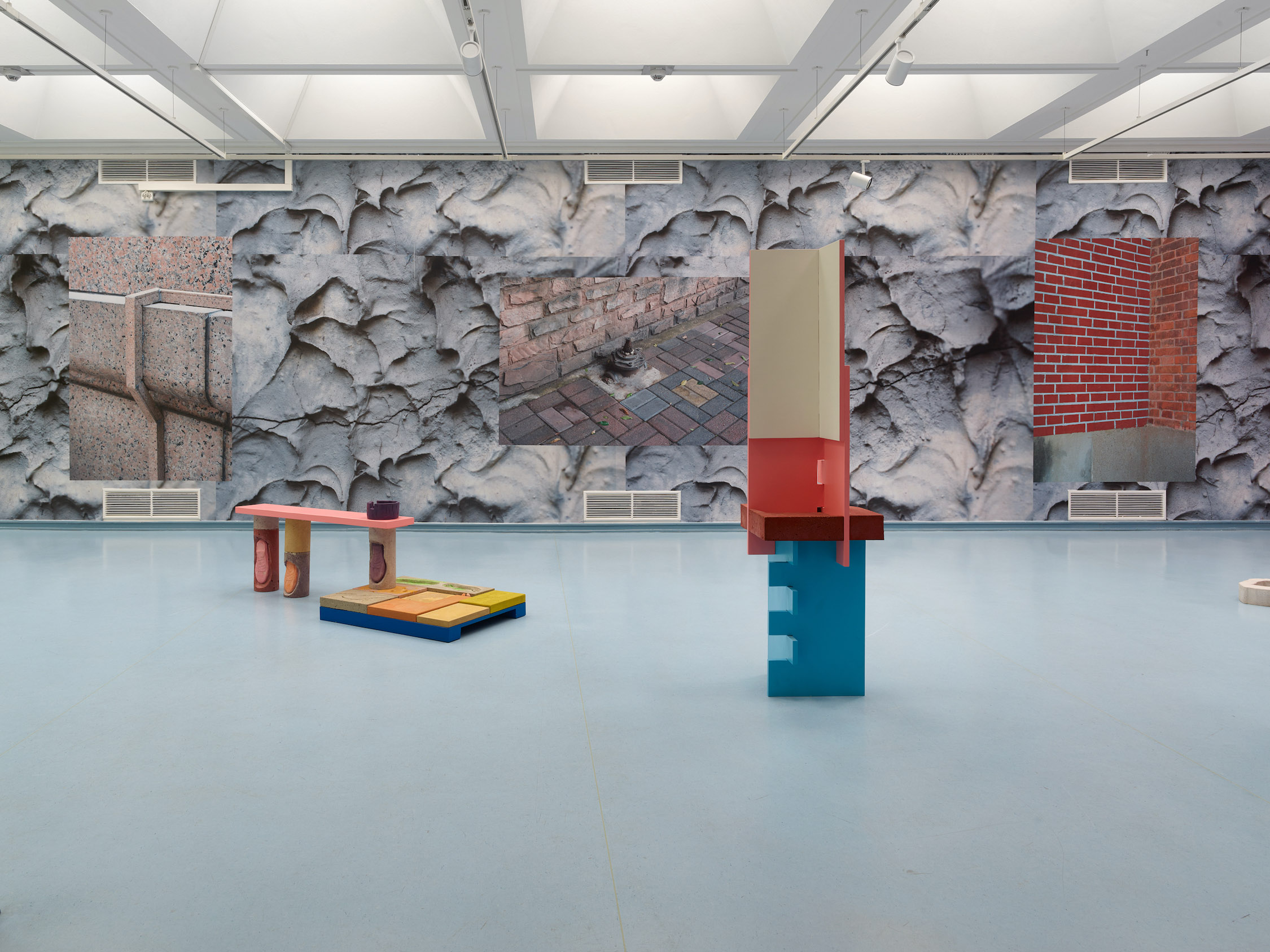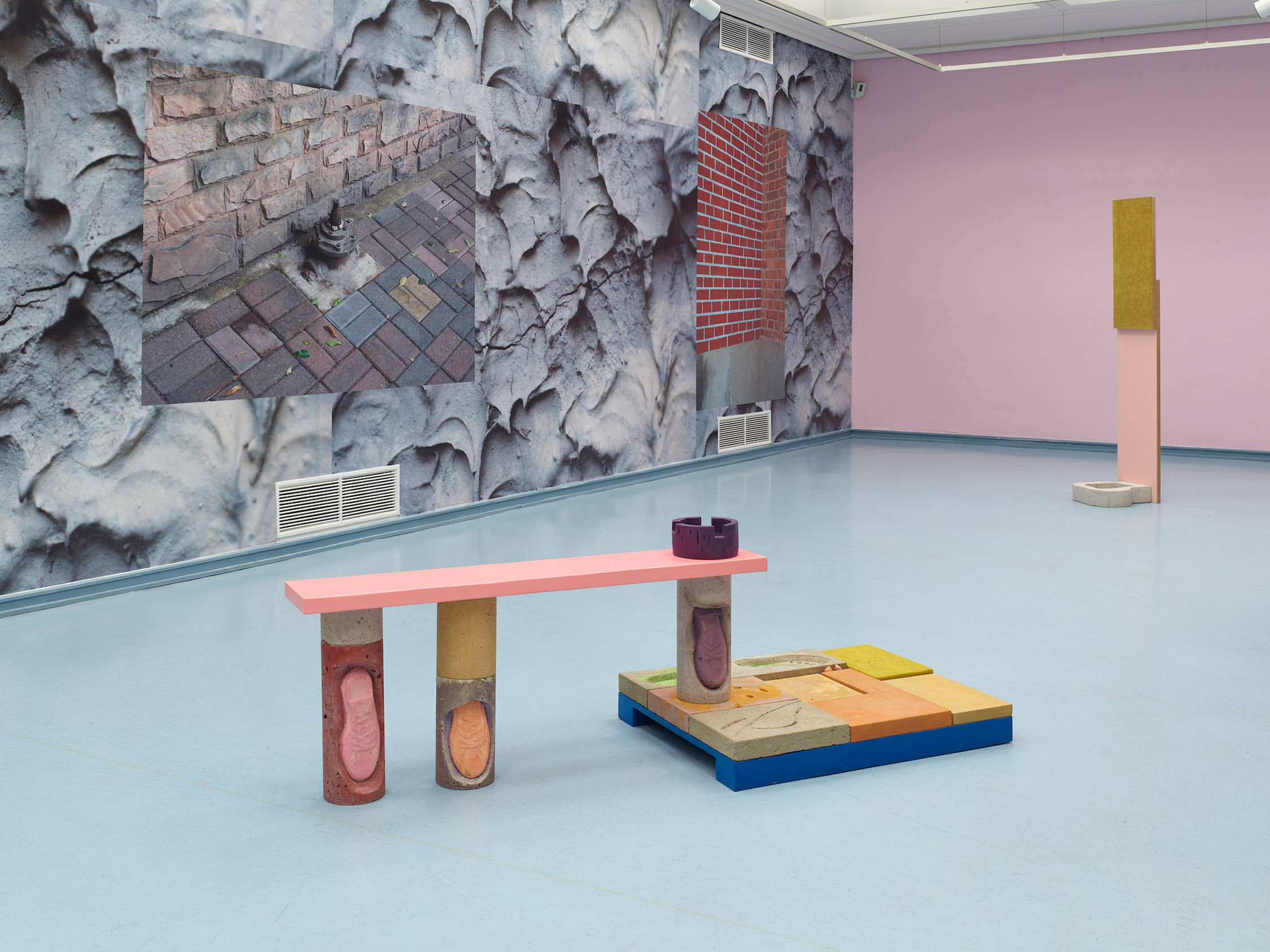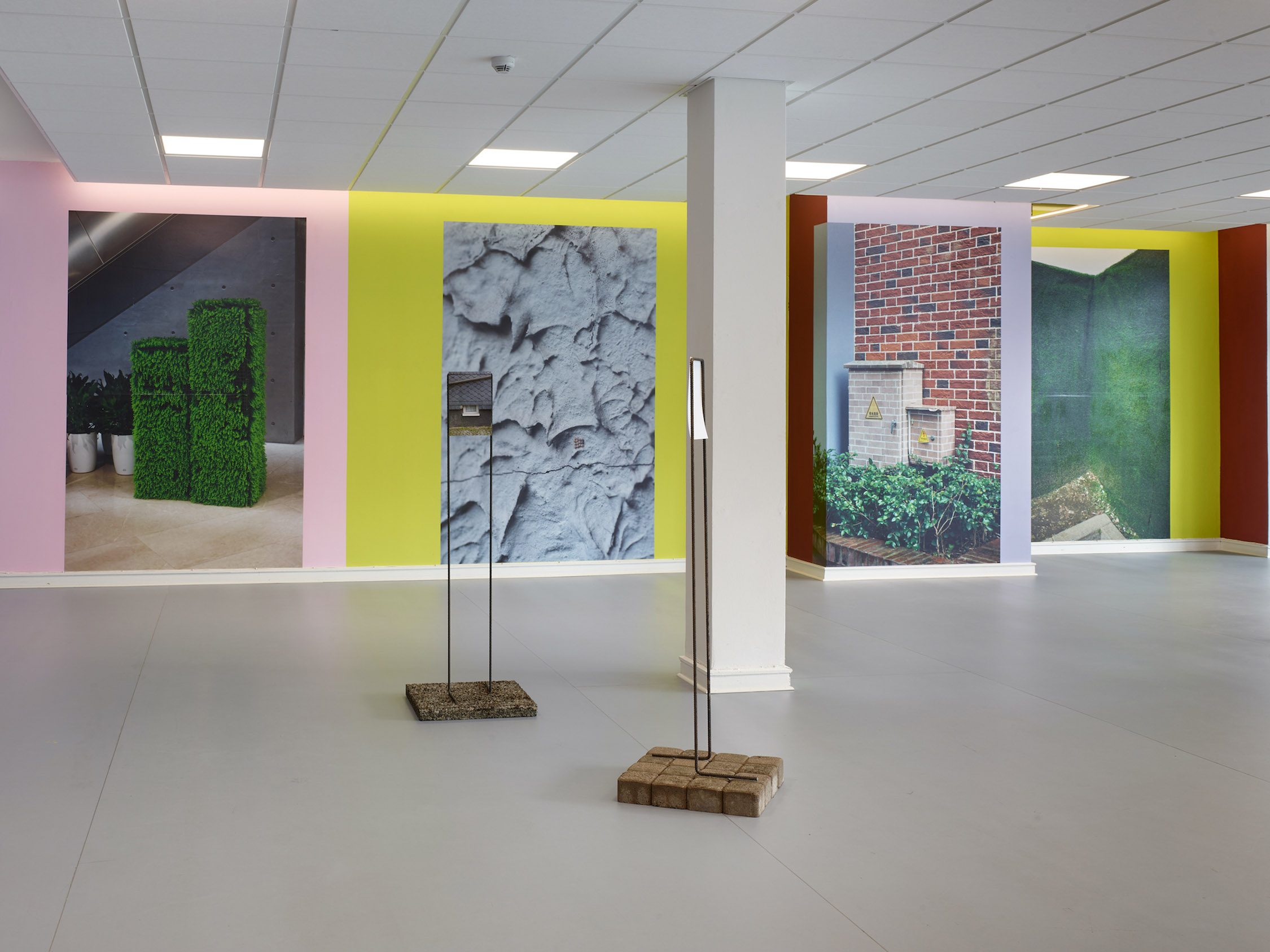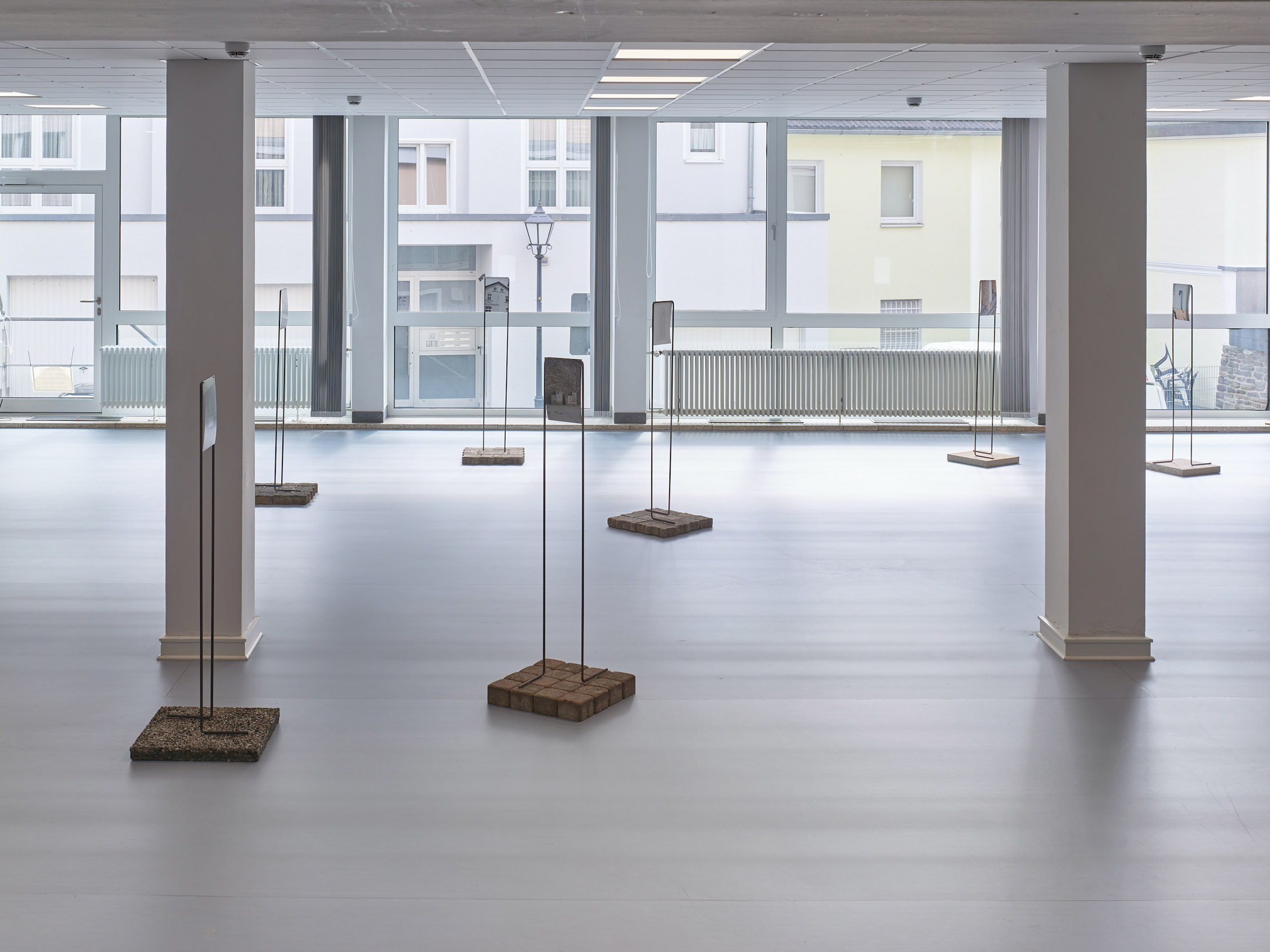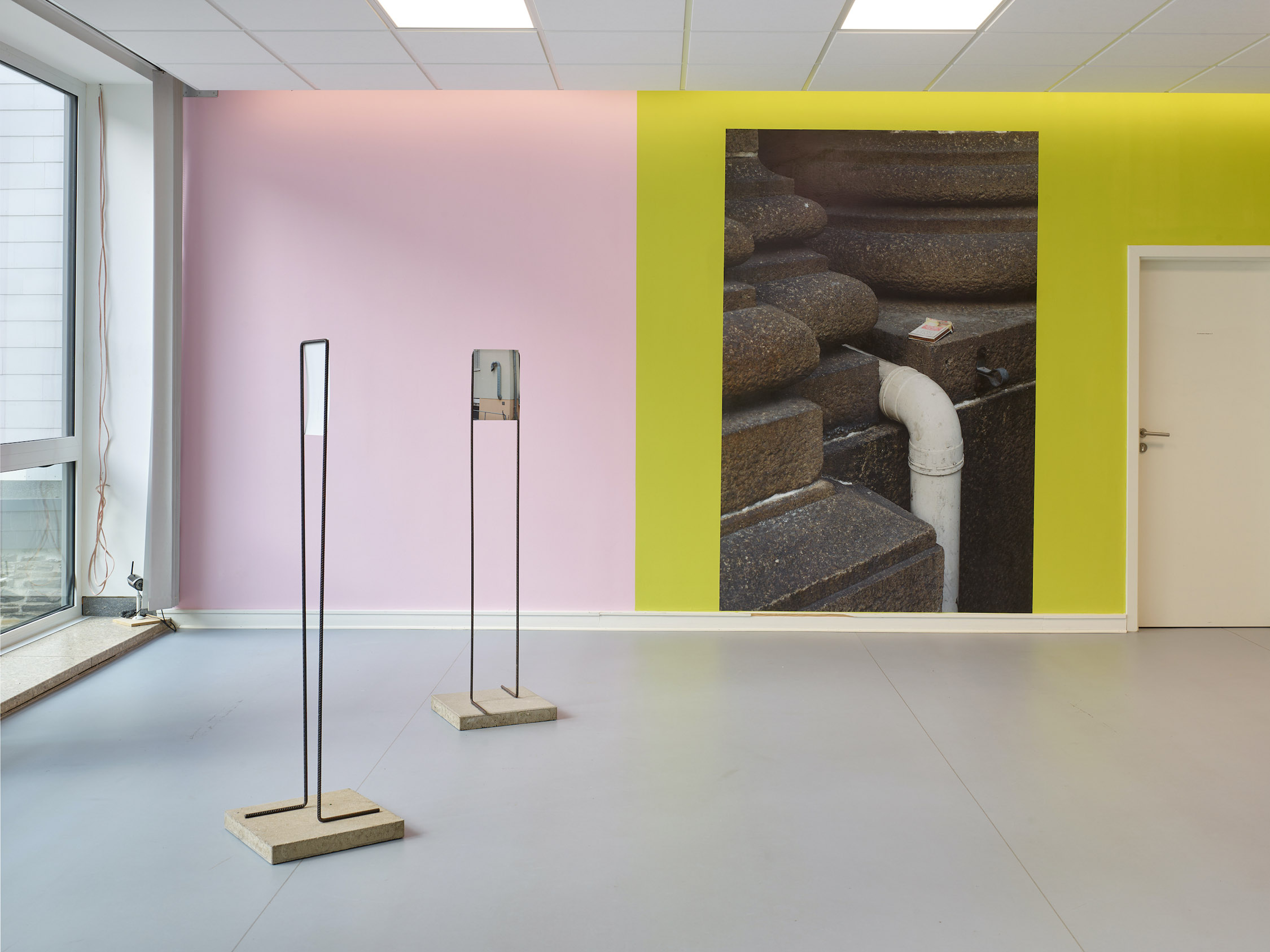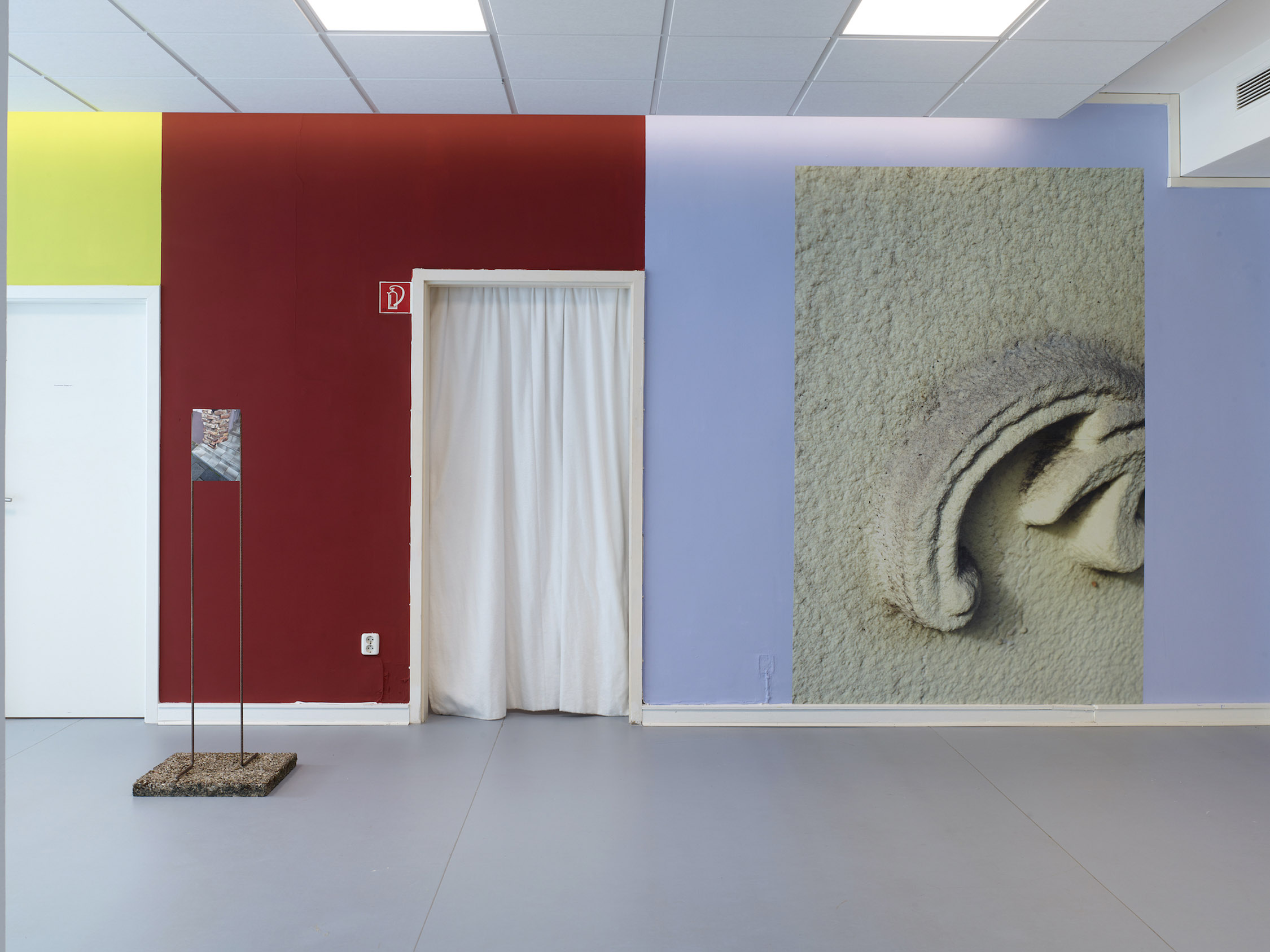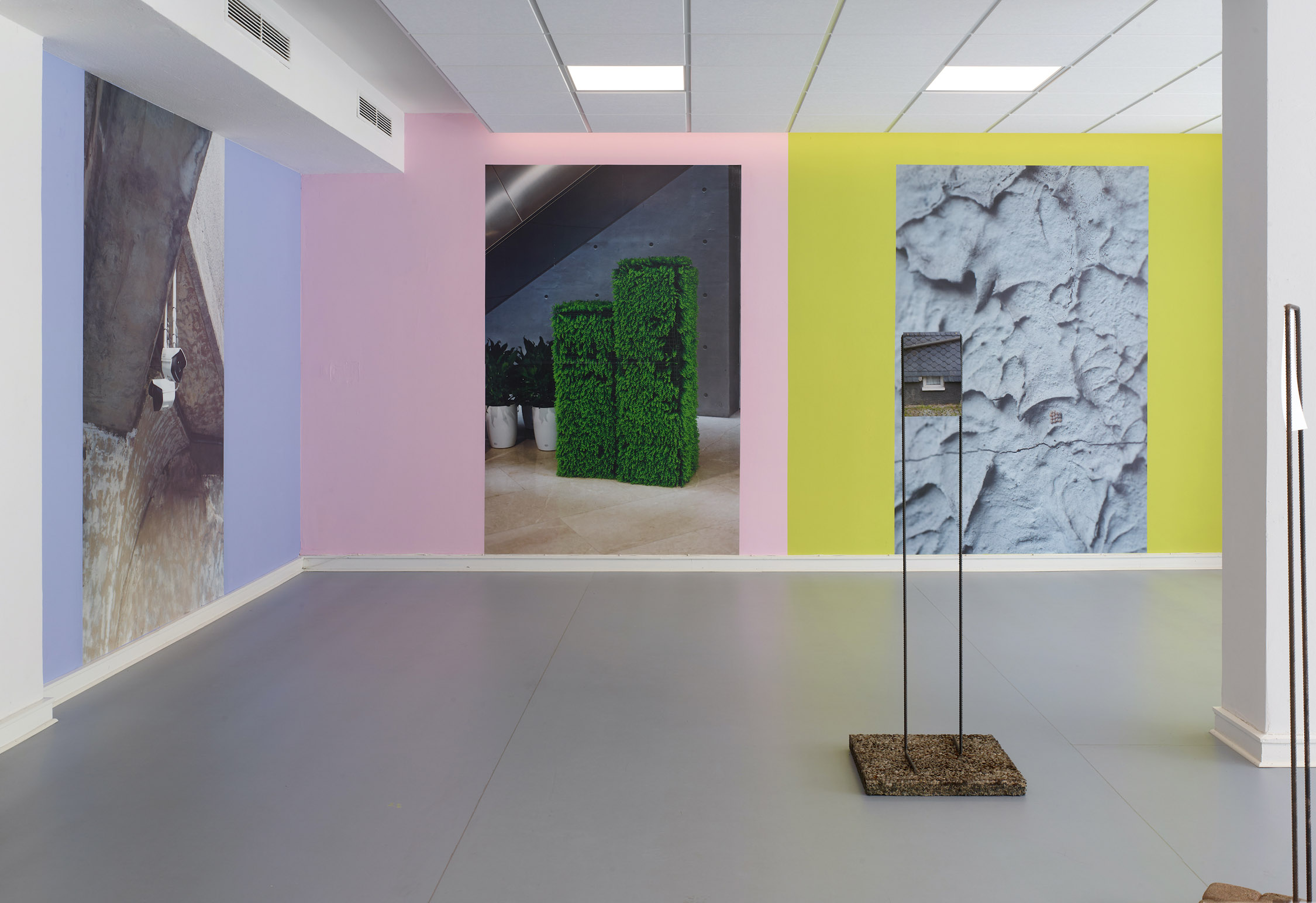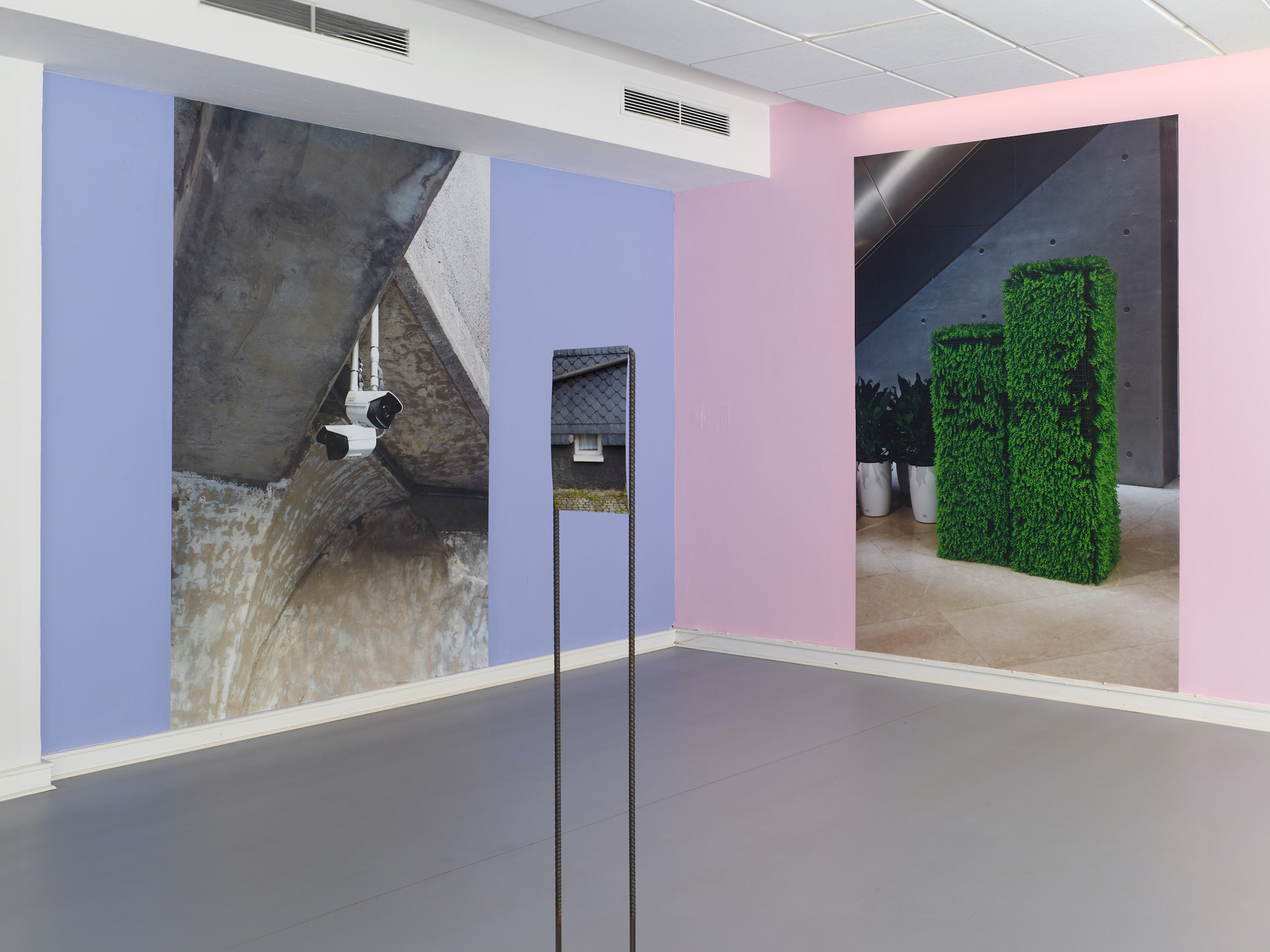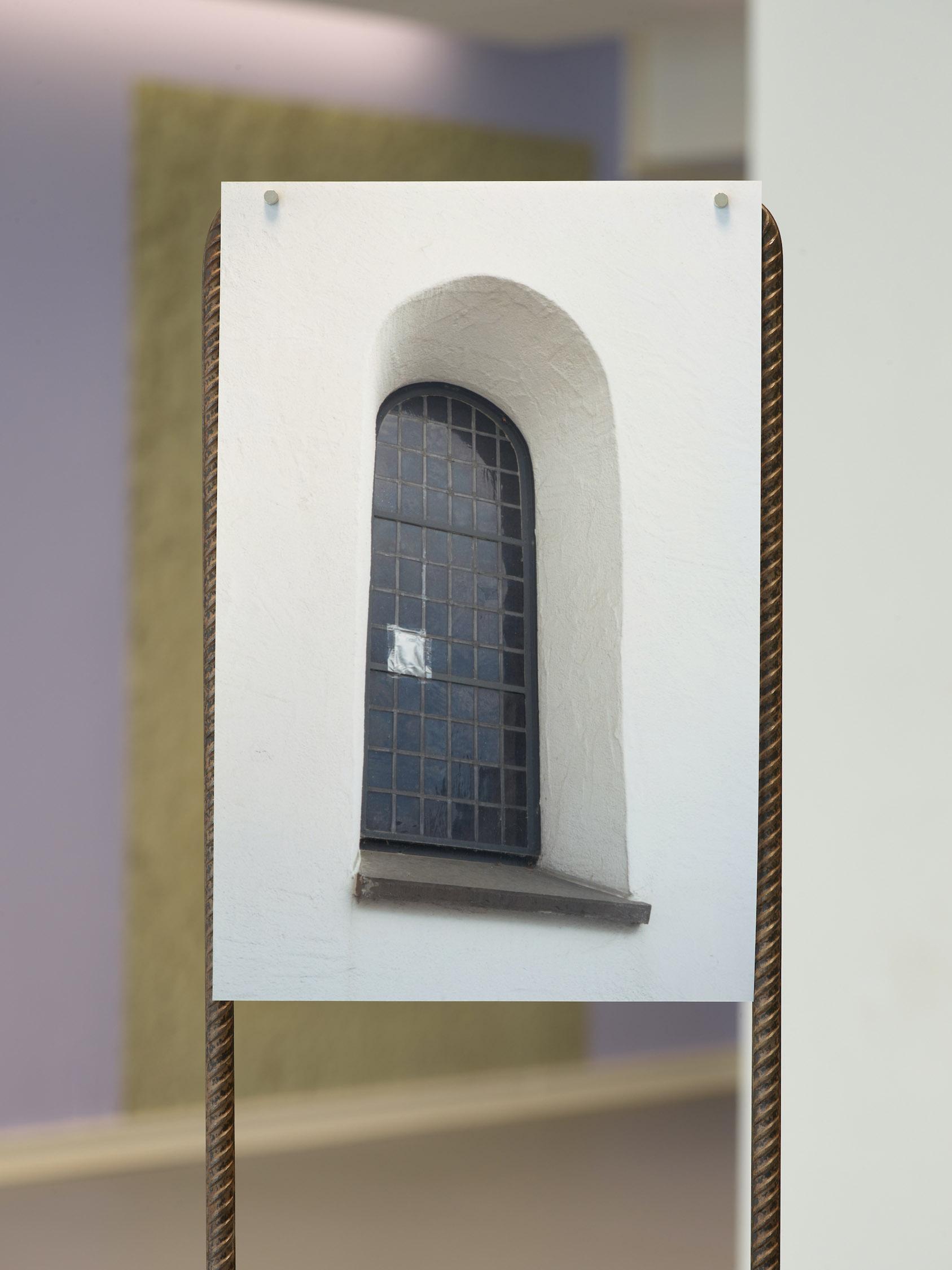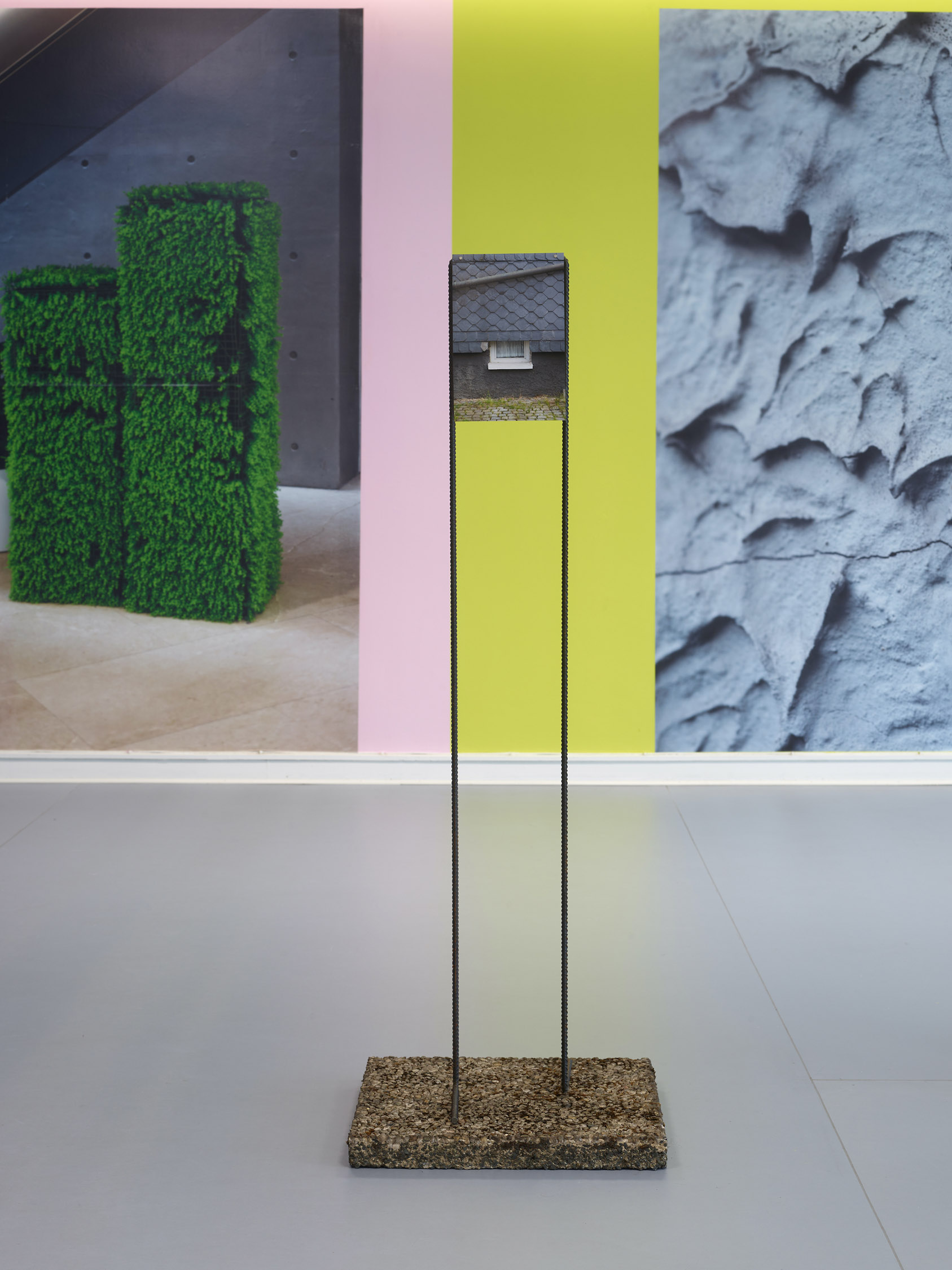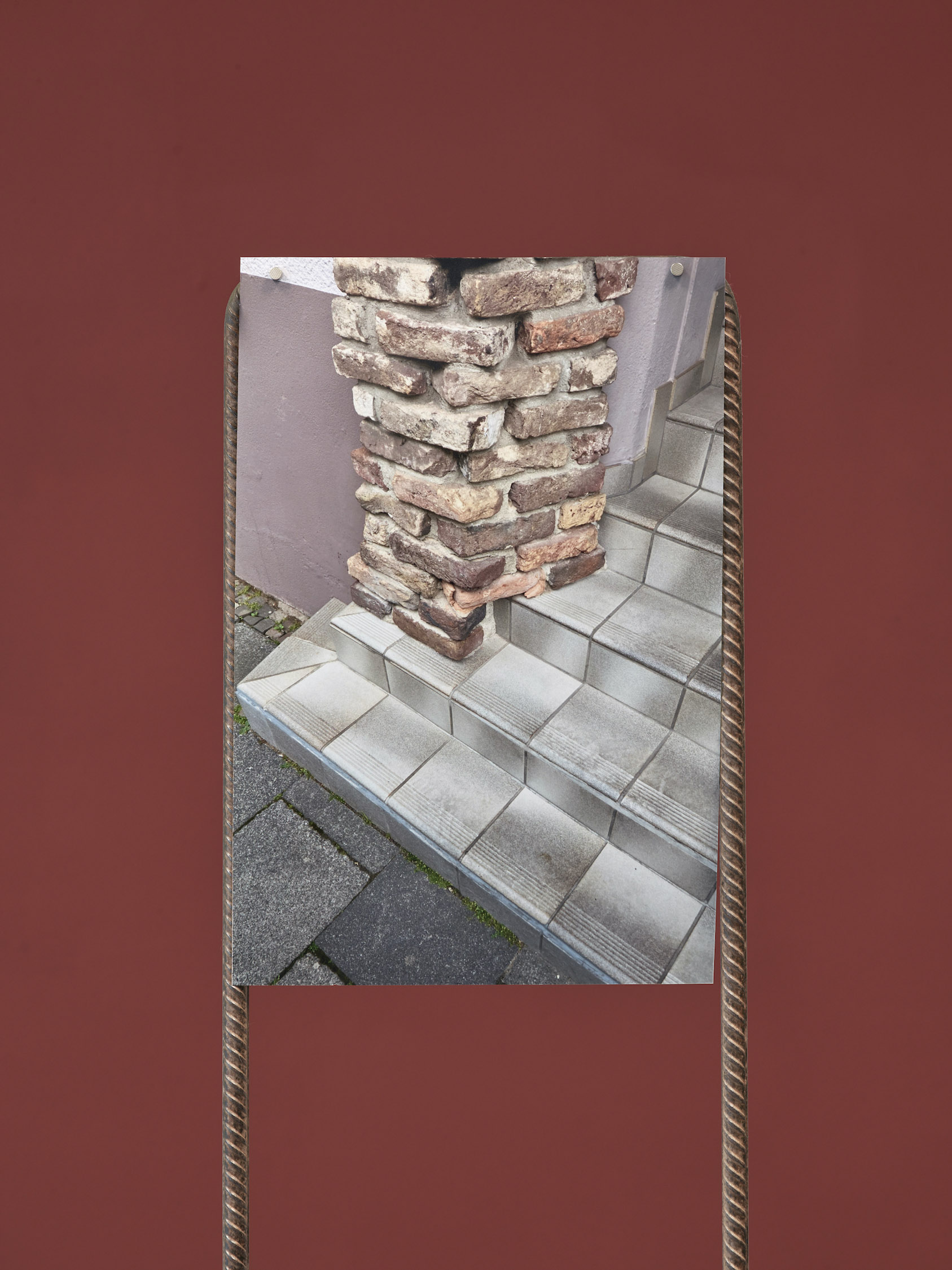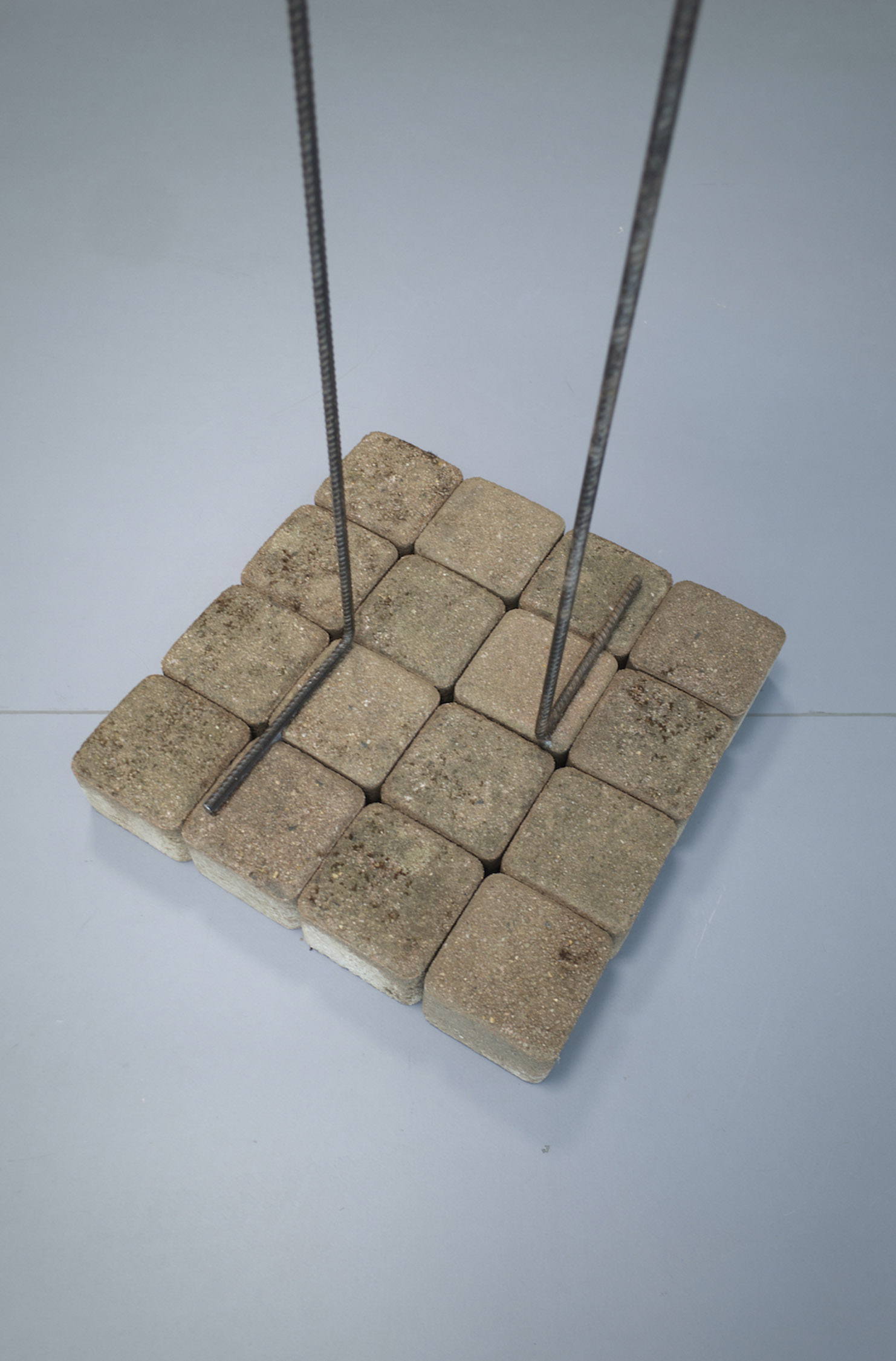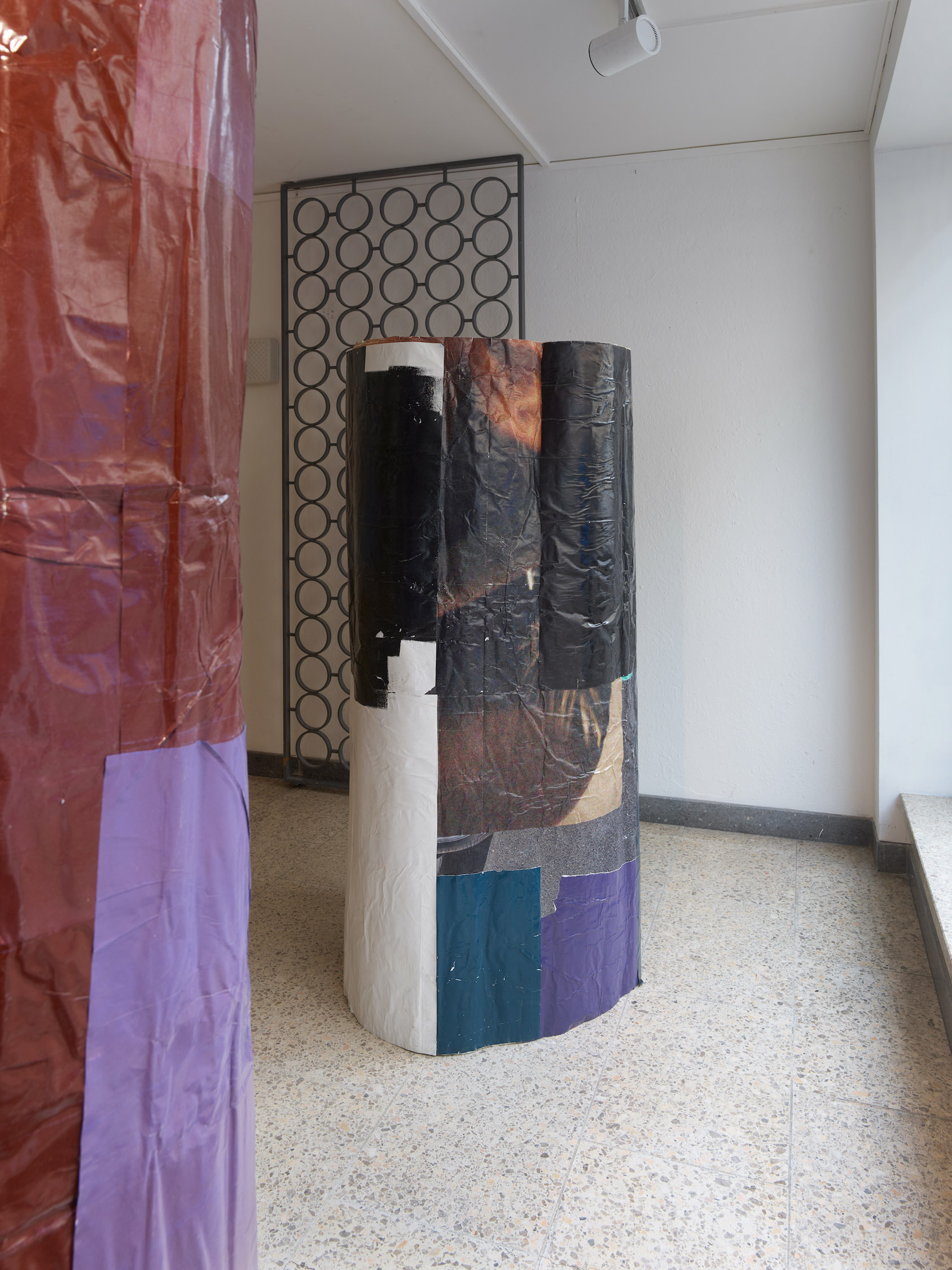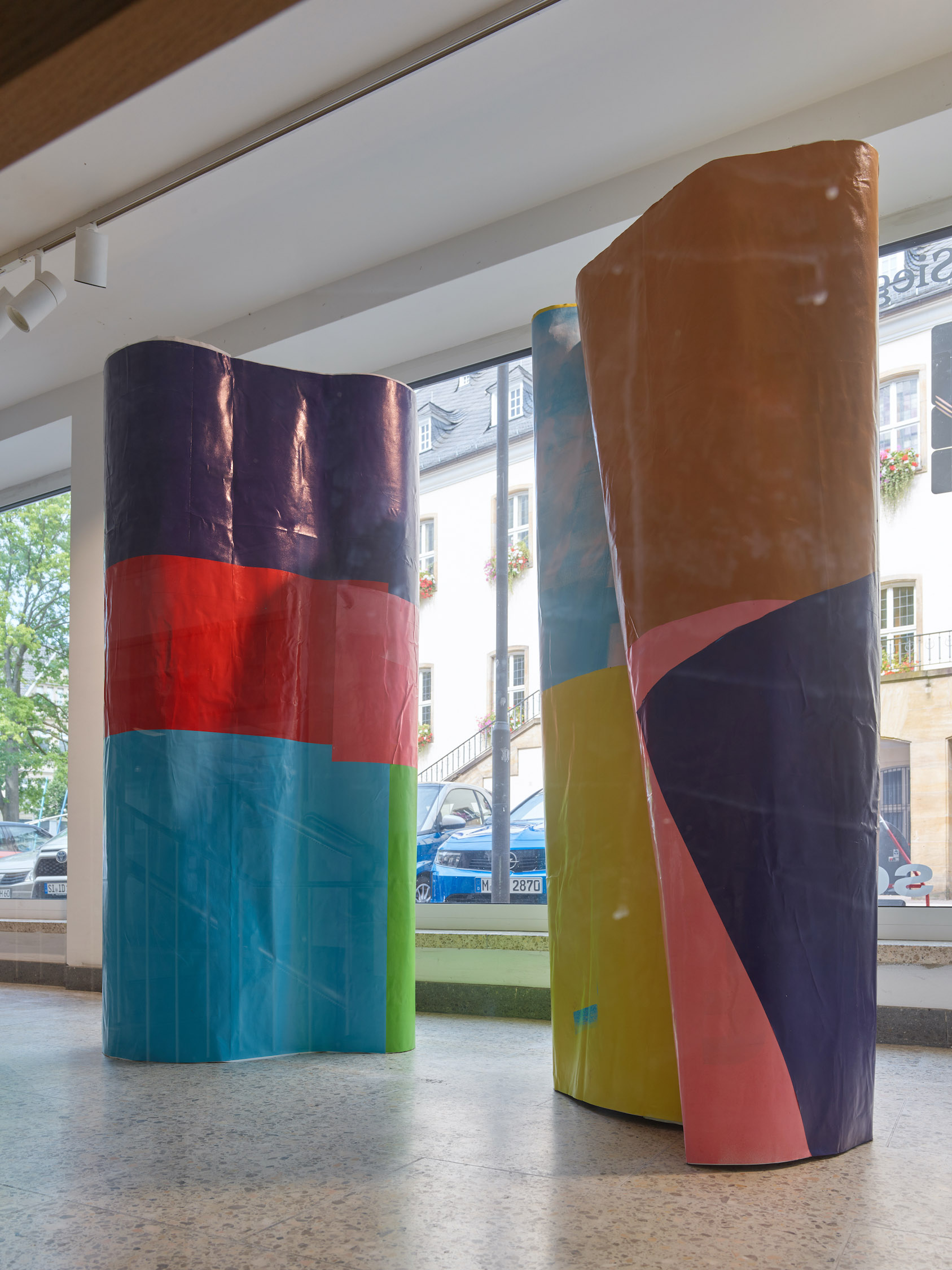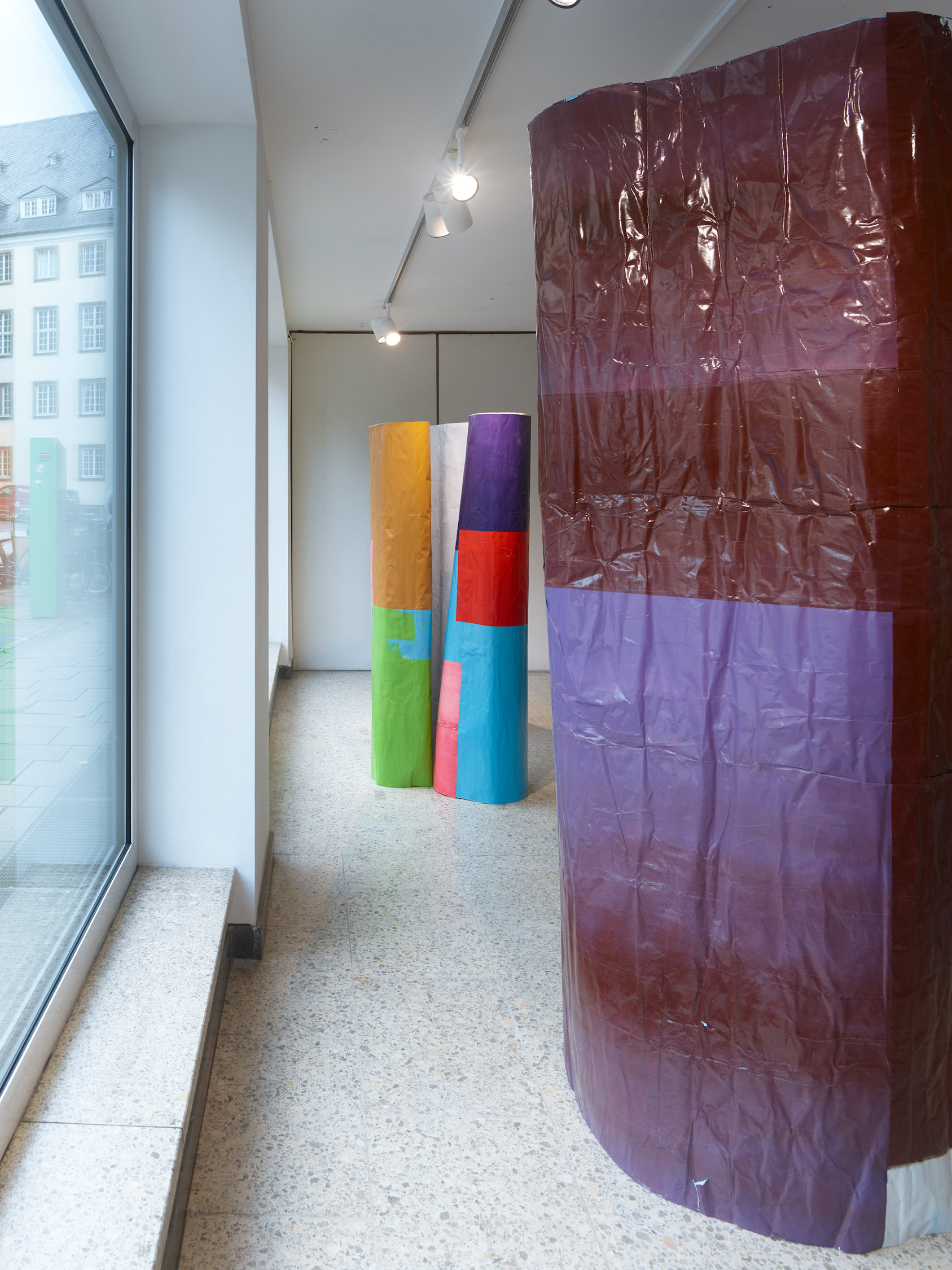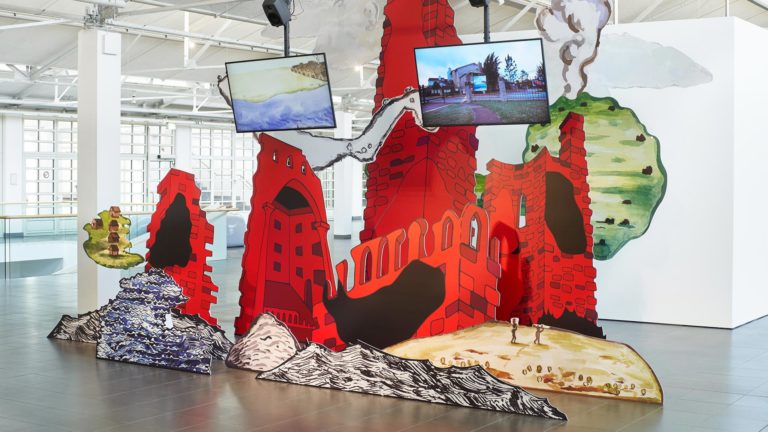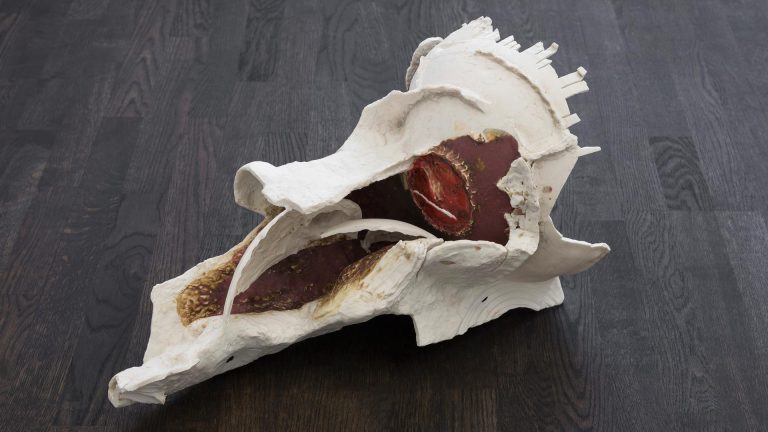Cities as places of coexistence, as both spontaneous and staged public spaces, and as architecture made into stories and histories are the basis of Maruša Sagadin’s and Bianca Pedrina’s artistic investigations. Both artists explore the possibilities and limitations of public space, the social dimensions of architecture and urban planning, and the contradictions inherent in urban space and infrastructure. Their perception of individual buildings or parts of buildings, of striking or inconspicuous views and forms, is condensed in their work into a critique that is both humorous and subtly precise. This critique is not a mere denunciation of the existing, but a sensitive questioning of the urban everyday for its backgrounds, shadows, and deeper layers.
Bianca Pedrina demonstrates how they apply this specifically to Siegen with recent photographs of Siegen, which are presented in the public space as attractive “eye-catchers” in the form of posters. She often traces forms and ideas of architecture and their technical, functional, and aesthetic development. Rarely does she focus on prestigious buildings. When she does, it is usually on a particular detail. She focuses on seemingly insignificant traces and fragments-such as bare walls, banal joints, floor alignments, or ordinary cracks in plaster-that potentially contain the larger picture. Her motifs reveal what architecture actually tries to hide: the disillusionment with architectural art and the inevitability that emerges in troublesome details. Yet in the often overlooked, in the apparent emptiness, deep traces of human life are deposited. In the artist’s photographs, urban interventions and buildings are revealed as products of their designers, their use, and the passage of time. Pedrina’s interpretation of architectural photography aims to demystify the distorted representation of architecture that has become a selling point, and to offer an alternative reading. Bianca Pedrina was born in 1985 and studied in Bern and Frankfurt. She lives and works in Vienna and Basel.
Influenced by architectural history, Maruša Sagadin explores the social aspects underlying a building or a place. Her artistic work operates at the intersection of private and public space, fusing elements of architecture, sculpture, and painting. Through her often installative works, Sagadin addresses the contradictions inherent in secondary architectures such as stairs, curbs, building facades, dead ends, or corners in urban space. A central aspect of her work is the humorous and playful approach to these themes, which is evident in the titles of her installations, such as “Bad Mood without Kiosk and Kitchen,” “Talking with Hands and Feet,” or “Tschumni Alumni,” which emphasize a cheerful, good-humored, and ironic dimension. Her colorful, cartoon-like sculptures of wood, concrete, and cardboard resemble stage sets and invite immediate interaction. They address social and gender issues in architecture: Who builds for whom and where? And who has the opportunity to build at all? What are the rules for building, and how binding are they? These considerations lead Sagadin to consciously break norms and structures in her sculptures: Through humor and exaggerated forms such as feet, boots, and the use of color, she reveals social mechanisms of inclusion and exclusion in urban space, while at the same time connecting to established codes of art interpretation. Born in Ljubljana in 1978, Maruša Sagadin studied architecture at the Technical University in Graz and performance art and sculpture at the Academy of Fine Arts in Vienna, where she lives and works today.
The title “Schiefer Schiefer” refers to slate, a common material in the Siegerland region. At the same time, it plays with the tension between stability and irregularity, perfection and imperfection. The double meaning of the term refers to the artistic exploration of the possibilities and limitations of form and material, as well as the break with conventional and established interpretations of architecture. Both artists share an interest in transitions and ruptures, overlaps and intersections that often go unnoticed in built space, but which affect our usual ideas and perceptions of architecture. A series of posters placed on billboards at various locations in the Siegen-Wittgenstein district extends the exhibition into public space, becoming a constant companion in the cityscape.
The closing event on October 20 will include a lecture by Rotterdam artist Michiel Huijben. The exhibition is supported by the Ministry of Culture and Science of North Rhine Westfale and the Stiftung Kunstfonds.

